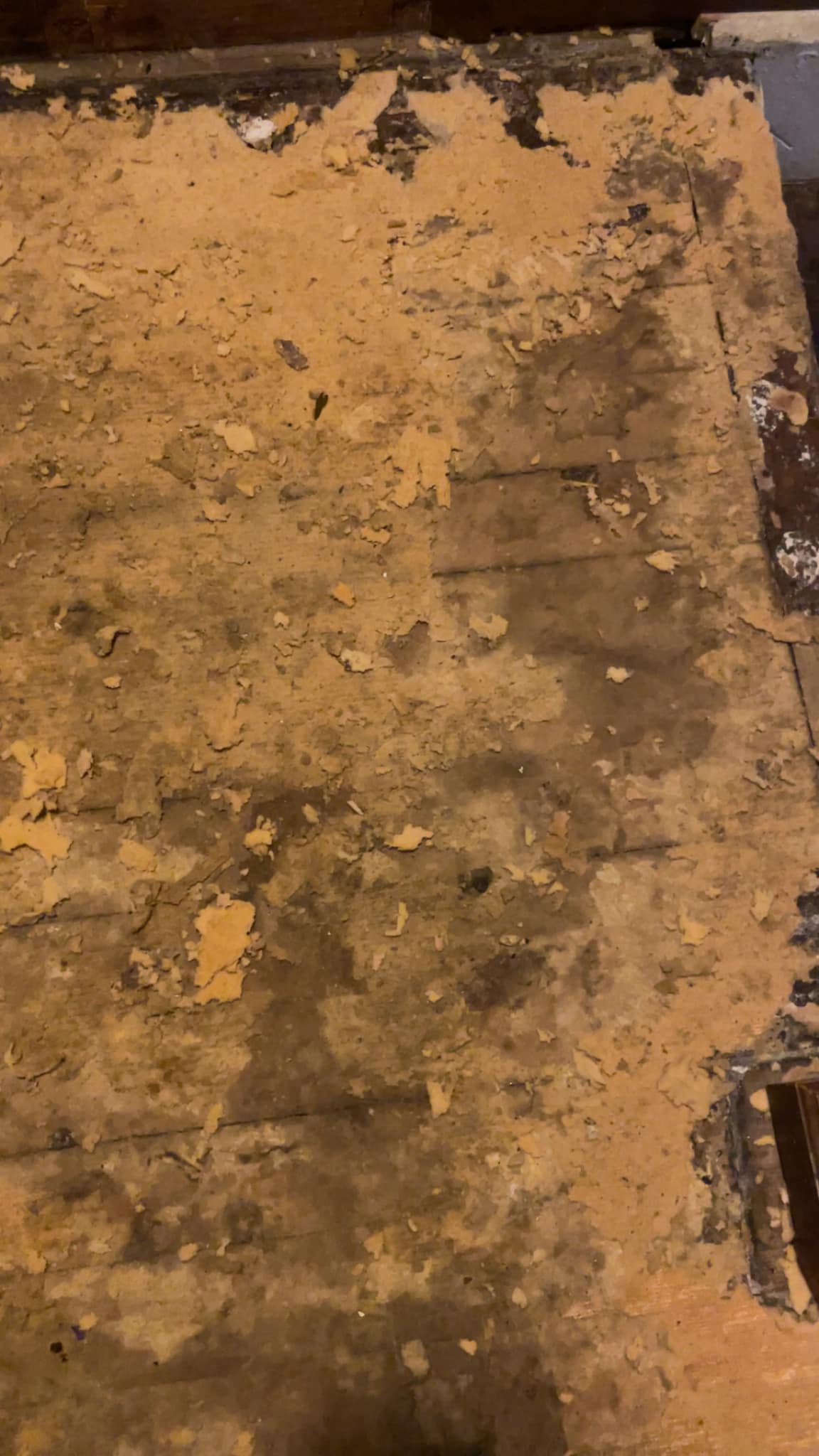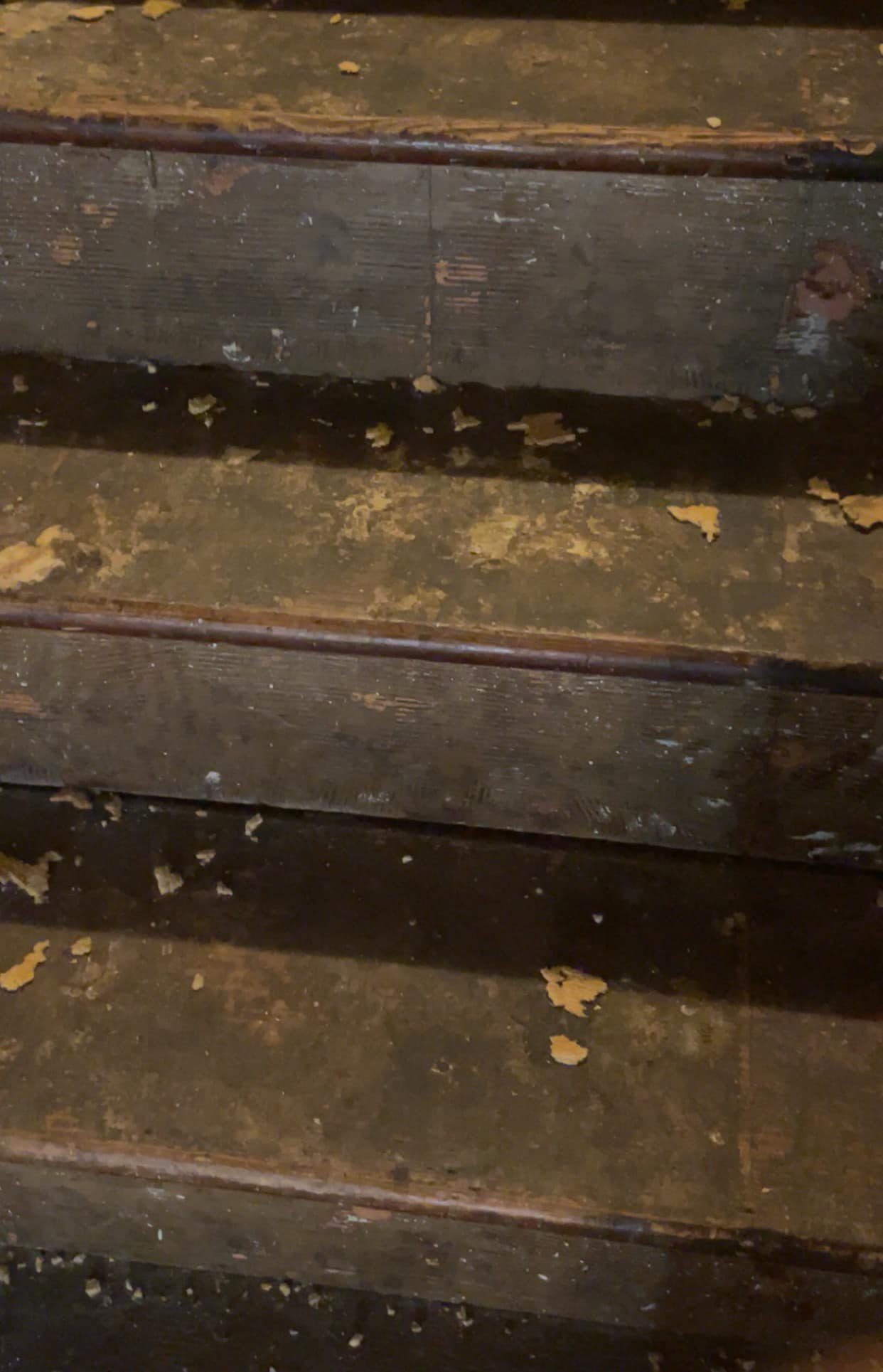How can I fix messed up stairs and hallway floor after tearing up glued down carpet, and what paint should I use for sanding and painting?
10 months ago
Last Updated: August 17, 2024
I removed all the carpet from the stairs and hallway, but it seems like the previous owner really secured it down with glue or something because the floor is in rough shape now. Do you have any ideas on how I could fix this? I’ve tried scraping off as much leftover residue as possible, but it’s really stuck on there. I’m thinking about sanding it down and painting the stairs. What are your thoughts on that and what kind of paint should I use for the job?


If you’ve sanded with all that glue, your sandpaper will quickly clog up! Have you attempted using a heat gun to soften the glue while scraping it off? If you manage to remove enough glue, you can try using acetone and lots of rags, similar to removing nail polish. You might have already used acetone on the stairs since there’s minimal glue on them. Then proceed to sand and paint. Consider using attractive stair runners to prevent slipping. Whatever method you choose will require a significant amount of effort and time. Unless you’re dealing with a subfloor, there’s not much else to do. Best of luck!
Hello there!
When dealing with a floor that’s in rough shape after carpet removal, it can be tough, but with some elbow grease and the right approach, you can handle it. Here’s a step-by-step guide to assist you:
1. Cleaning Glue Residue: After attempting to scrape off the glue, the next step is using a solvent or adhesive remover available at hardware stores. Follow the instructions carefully to soften and remove the remaining glue. Always wear gloves and ensure good ventilation.
2. Sanding the Surface: Once most of the glue is gone, sanding will help smoothen the surface. You can use a hand sander or an electric sander starting from coarse grit paper to fine grit for a smooth finish without damaging the wood.
3. Selecting the Right Paint: For stairs, opt for a durable paint suitable for foot traffic like floor paint or hard-wearing enamel. Look for products labeled for floor or stair use.
4. Priming the Surface: Apply a primer before painting to enhance adhesion and achieve a uniform finish. Ensure the primer is suitable for wooden floors.
5. Painting: Use a brush for edges and a roller for flat surfaces. Apply at least two coats with sufficient drying time between coats as per instructions.
6. Final Touches: Once the paint is dry, consider applying a clear varnish or sealant for added protection, especially for high-traffic stairs.
Remember, patience is crucial. Each step takes time, but the outcome will be worth it. Maintain good ventilation when working with paint and solvents.
Best of luck with your project!
Robert
Please be aware that old adhesives may contain asbestos, especially in dark-colored ones. It’s a good idea to have it tested before creating a lot of dust during sanding or other operations. While many believe asbestos was banned in the late 70s/early 80s in the U.S., it could still be present in certain building materials well into the 90s.
Start by scraping off as much as you can with a plastic scraper, then use adhesive remover, followed by a coarse sanding screen before sanding and refinishing. It’s a lengthy process but definitely worth it.
Try using a belt sander or covering it with 6mm oak plywood and then applying varnish.